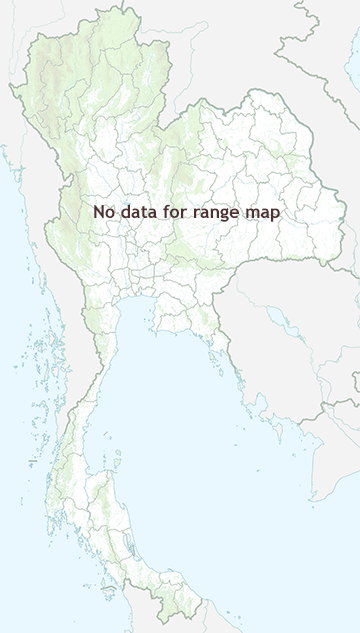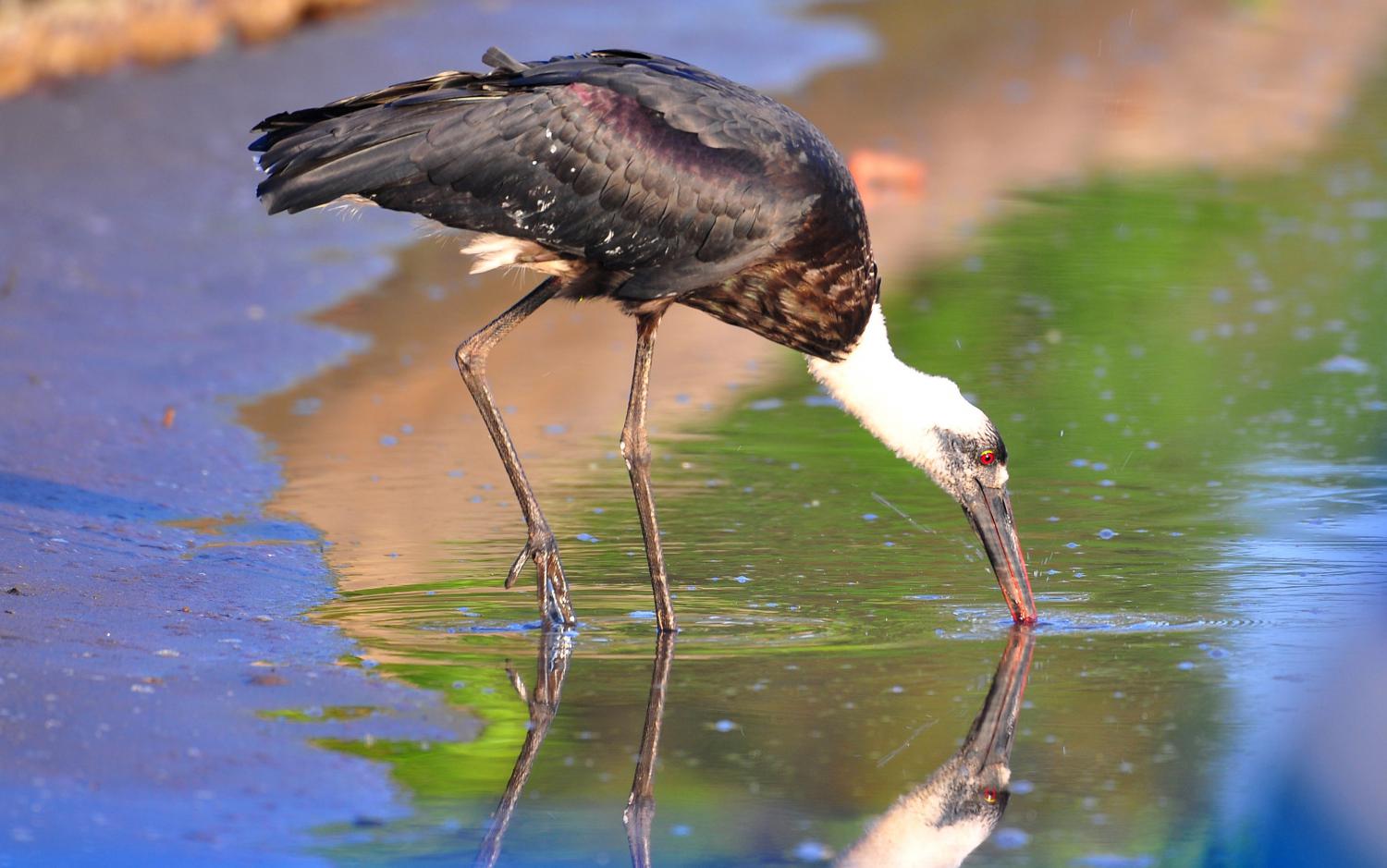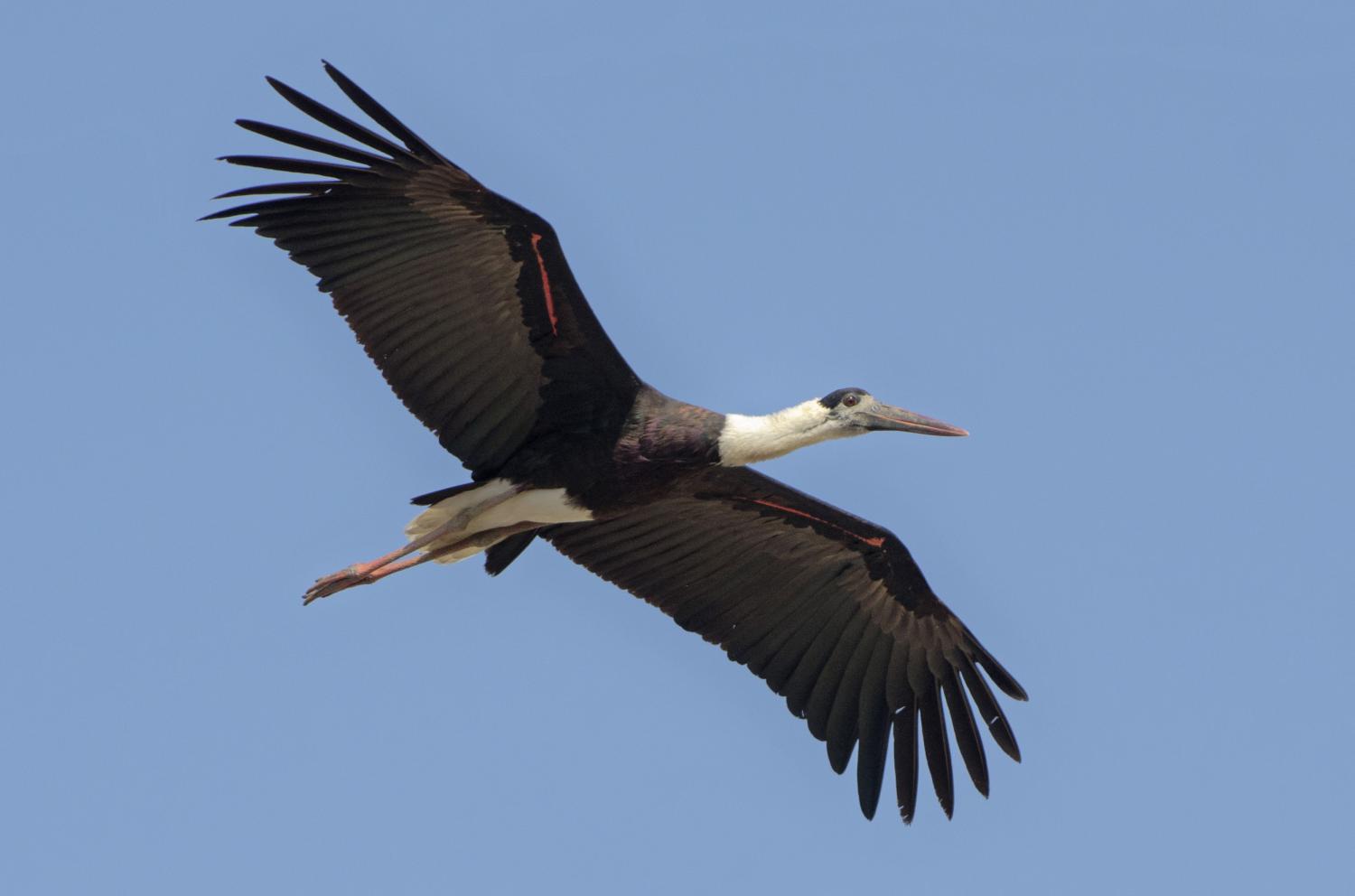Species of Thailand
Asian woollyneck
Ciconia episcopus
Pieter Boddaert, 1783
In Thai: นกกระสาคอขาว
The woolly-necked stork or whitenecked stork (Ciconia episcopus) is a large wading bird in the stork family Ciconiidae. It breeds singly, or in small loose colonies. It is distributed in a wide variety of habitats including marshes in forests, agricultural areas, and freshwater wetlands.
Taxonomy
The woolly-necked stork was described by the French polymath Georges-Louis Leclerc, Comte de Buffon in 1780 in his Histoire Naturelle des Oiseaux from a specimen collected from the Coromandel Coast of India. The bird was also illustrated in a hand-coloured plate engraved by François-Nicolas Martinet in the Planches Enluminées D'Histoire Naturelle which was produced under the supervision of Edme-Louis Daubenton to accompany Buffon's text. Neither the plate caption nor Buffon's description included a scientific name but in 1783 the Dutch naturalist Pieter Boddaert coined the binomial name Ardea episcopus in his catalogue of the Planches Enluminées. The woolly-necked stork is now placed in the genus Ciconia that was erected by the French zoologist Mathurin Jacques Brisson in 1760. The genus name Ciconia is the Latin word for a "stork"; the specific epithet episcopus is Latin for "bishop".
Three subspecies are recognised:
- C. e. microscelis Gray, GR, 1848 – Africa south of the Sahara
- C. e. episcopus (Boddaert, 1783) – India to Indochina, the Philippines and Malay Peninsula, north Sumatra
- C. e. neglecta (Finsch, 1904) – south Sumatra, Java, Lesser Sunda Islands, Sulawesi
The online edition of the Handbook of the Birds of the World treats the African race, C. e. microscelis, as a separate species, the African woolyneck, with the remaining two subspecies becoming the Asian woolyneck.
Description
The woolly-necked stork is a medium-sized stork at 75–92 cm tall. The iris is deep crimson or wine-red. The stork is glistening black overall with a black "skull cap", a downy white neck which gives it its name. The lower belly and under-tail coverts are white, standing out from the rest of the dark coloured plumage. Feathers on the fore-neck are iridescent with a coppery-purple tinge. These feathers are elongated and can be erected during displays. The tail is deeply forked and is white, usually covered by the black long under tail coverts. It has long red legs and a heavy, blackish bill, though some specimens have largely dark-red bills with only the basal one-third being black. Sexes are alike. Juvenile birds are duller versions of the adult with a feathered forehead that is sometimes streaked black-and-white. The African birds are described as having the edges of the black cap diffused or with a jagged border compared to a sharp and clean border in the Asian birds. Sexes are identical, though males are thought to be larger. When the wings are opened either during displays or for flight, a narrow band of very bright unfeathered skin is visible along the underside of the forearm. This band has been variously described as being "neon, orange-red", "like a red-gold jewel", and "almost glowing" when seen at close range.
Small nestlings are pale grey with buffy down on the neck, and a black crown. At fledging age, the immature bird is identical to the adult except for a feathered forehead, much lesser iridescence on feathers, and much longer and fluffier feathers on the neck.
English common names for this species include Whitenecked Stork, Whiteheaded Stork, Bishop Stork, and the Parson-bird. More recently, the African and Asian populations are considered to be two different species, the African and the Asian Woolly-neck. This is based purely on geographical isolation, but there is no morphological or phylogenetic evidence yet to support this split.
Distribution and habitat
It is a widespread tropical species which breeds in Asia, from India to Indonesia, and throughout Africa. It is a resident breeder building nests on trees located on agricultural fields or wetlands, on natural cliffs, and on cell phone towers. They use a variety of freshwater wetlands including seasonal and perennial reservoirs and marshes, crop lands, irrigation canals and rivers. They are attracted to fires in grasslands and crop fields where they capture insects trying to escape the fire. They use ponds and marshes inside forests in both Africa and Asia, especially in south-east Asia where they use grassy and marshy areas in clearings in evergreen rainforests. In India, they are an uncommon species in coastal habitats. They use coastal areas in Africa also, with birds in Sulawasi observed to be eating sea snakes, and birds on the Kenya coast foraging in coral reefs and mudflats. In an agricultural landscape in north India, woolly-necked storks preferred fallow fields during the summer and monsoon seasons, and natural freshwater wetlands during the winter. Here, irrigation canals were preferentially used during winters when water levels were low, and birds avoided crop fields in all seasons. Assisted by construction of new irrigation canals, this species is spreading to arid areas like the Thar Desert in Rajasthan, India.
Individuals of this species have been sighted at altitudes of 3, 790 m above sea level in China (Napahai wetland), and 3, 540 m above sea level in Nepal (Annapurna Conservation Area).
Behavior
Several calls by adult birds have been described including bisyllabic whistles given along with displays at the nest, and a fierce hissing sound when a bird was attacked by a trained falcon. The woolly-necked stork is a broad winged soaring bird, which relies on moving between thermals of hot air for sustained long distance flight. Like all storks, it flies with its neck outstretched. It has also been observed to 'roll, tumble and dive at steep angles' in the air with the wind through its quills making a loud noise. Adult birds have also been observed diving from nests before flying away abruptly in a 'bat-like flight'.
This species is largely seen as single birds, in pairs, or in small family groups of 4–5, and flocks are uncommon. In agricultural landscapes, the species occurs mostly as very small flocks (< 5 birds), though flocks of over 10 birds occur commonly. Flocking is affected by different factors in different areas. In more arid areas, most of the flocks occur in the summer when few wetlands are remaining, whereas in areas with more water, flocks occur largely in winter after chicks have fledged from nests. They often associate with wintering stork species including the Black and White Storks.
Diet
The woolly-necked stork walks slowly and steadily on the ground seeking its prey, which like that of most of its relatives, consists of amphibians, reptiles and insects.
Breeding
Typically, a large stick nest is built on a tree, and two to five eggs form the typical clutch, with five eggs being very rare. Birds commonly use both forest trees and solitary trees in agricultural areas to build nests. In India, nests are increasingly being observed in urban areas on cell phone towers. Riverside cliffs are also used occasionally as nest sites.
Conservation
The woolly-necked stork is one of the species to which the Agreement on the Conservation of African-Eurasian Migratory Waterbirds (AEWA) applies.
This article uses material from Wikipedia released under the Creative Commons Attribution-Share-Alike Licence 3.0. Eventual photos shown in this page may or may not be from Wikipedia, please see the license details for photos in photo by-lines.
Category / Seasonal Status
BCST Category: Recorded in an apparently wild state within the last 50 years
BCST Seasonal status: Resident or presumed resident
Scientific classification
- Kingdom
- Animalia
- Phylum
- Chordata
- Class
- Aves
- Order
- Ciconiiformes
- Family
- Ciconiidae
- Genus
- Ciconia
- Species
- Ciconia episcopus
Common names
- English:
- Asian woollyneck
- Woolly-necked stork
- Thai: นกกระสาคอขาว
Conservation status

Vulnerable (IUCN3.1)

Vulnerable (BirdLife)

Critically Endangered (ONEP)

Critically Endangered (BCST)
Photos
Please help us review the bird photos if wrong ones are used. We can be reached via our contact us page.
Range Map




